
I’m standing at 10,000 feet, skis on my feet, sun on my face, and the Andes stretched out like a jagged white spine to the horizon. It’s July—deep summer back home in New York—but here at Valle Nevado, Chile’s most modern ski resort, it’s a bluebird powder day.
Watch: Travel Tips For Planning a Ski-Hike Trip To South America
While skiing in South America is a pretty aspirational experience in and of itself, just a few days later, I’ll be trekking into Peru’s Sacred Valley, watching the sunrise over Machu Picchu with aching quads and a full heart. If this sounds like a dream trip to you, I’m here to let you know that you can do it too, and it’s actually pretty easy.
Combining these two marquis vacations is the kind of trip that makes you rethink what summer travel can be. One part ski adventure, one part cultural pilgrimage—and surprisingly doable in just a week.
It’s no secret that if you’re based in the Northern Hemisphere and want to extend your ski season each year, heading south of the equator is the place to do it. Ski seasons run from June through early October, with July and August offering the most consistent snowpack and storm cycles.
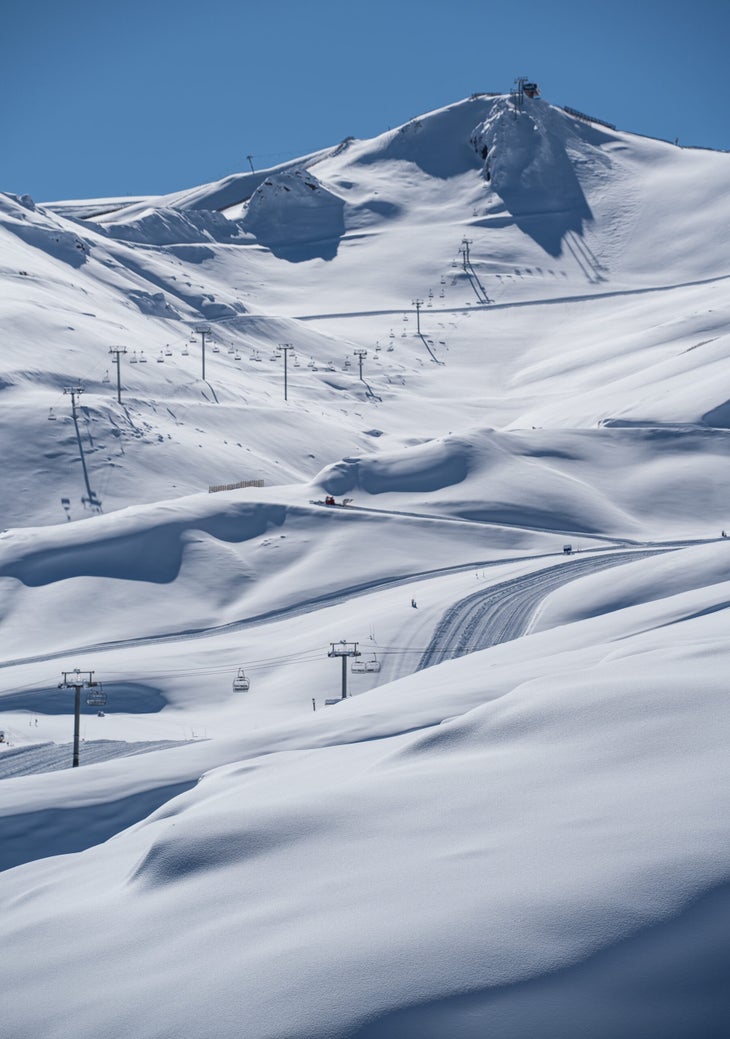
Meanwhile, in Peru, it’s the dry season—ideal for trekking and visiting Machu Picchu. This timing aligns perfectly for one unforgettable adventure: a few days of skiing high-alpine terrain in Chile, followed by an Andes-to-Cusco-style pivot into Peru’s ancient Incan heartland.
With direct flights available into Santiago from U.S. cities like Miami, Orlando, Atlanta, and Los Angeles, this isn’t just a trip for bucket-listers or luxury travelers. It’s a compact, accessible itinerary for anyone who craves more from their summer vacation than a lounge chair on the beach and a fruity cocktail. (Though you can have those too—Valle Nevado’s après scene is legit.)
Days 1-3: Skiing Valle Nevado, Chile
Many overnight flights into Santiago land rather early, so if you’re ambitious, you can fly in and be on the mountain the same day. After landing in Santiago, I took a 90-minute shuttle ride up the switchback-laced road to Valle Nevado. Perched above treeline, the resort is known for wide-open terrain, reliable snow, and a mellow, high-alpine vibe. It doesn’t have the same high-speed lift infrastructure of North America (though they’re currently investing in modernizing the fleet) or the village glitz of European resorts, but it makes up for that with expansive bowls, deep snow, and a chill, come-as-you-are energy.
Recently expanded snowmaking and enhanced on-mountain dining with food trucks and lodge upgrades are new this season, but what’s most exciting for myself and many U.S. skiers? It’s part of Ikon Pass, with passholders gaining up to seven ski days and 10 percent off lodging. Mountain Collective snags you three days of skiing, but even if you’re arriving without one of these passes, lift tickets and lodging will feel significantly less expensive in Valle Nevado if you’re used to skiing anywhere in the Lower 48.
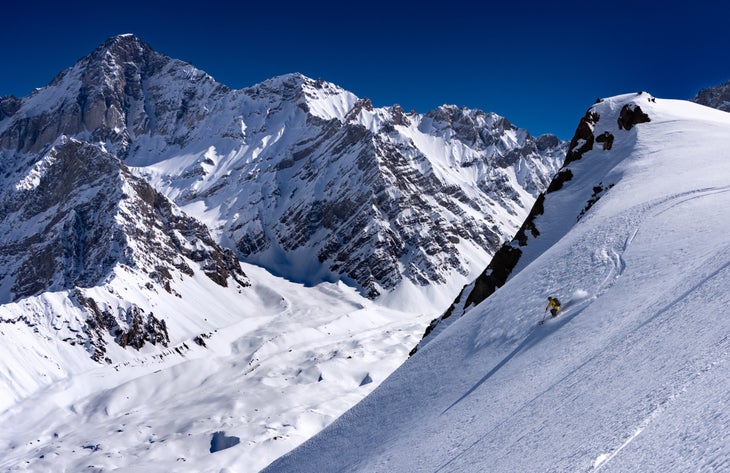
Once you’re on the mountain, you’ll find 2,200 skiable acres, but you can nearly double the available terrain with the new joint pass add-on that includes neighboring La Parva, giving you access to Chile’s largest interconnected ski kingdom.
You don’t need to step outside Valle Nevado’s boundaries to find terrain that’ll keep intermediates and seasoned skiers entertained for days. Perfectly pitched groomers spill down the resort’s wide-open flanks, offering endless room to carve. For a laid-back cruiser with views that steal your breath, point your tips down Camino Bajo, a sweeping blue run that rolls gently with postcard-worthy panoramas of the Andes.
When it’s time to go long, head to El Sol, Valle Nevado’s longest run. This leg-burner serves up a steady descent with breathtaking mountain vistas and, on clear days, views of the Santiago valley. It’s also the ideal warm-up before diving into more technical terrain.
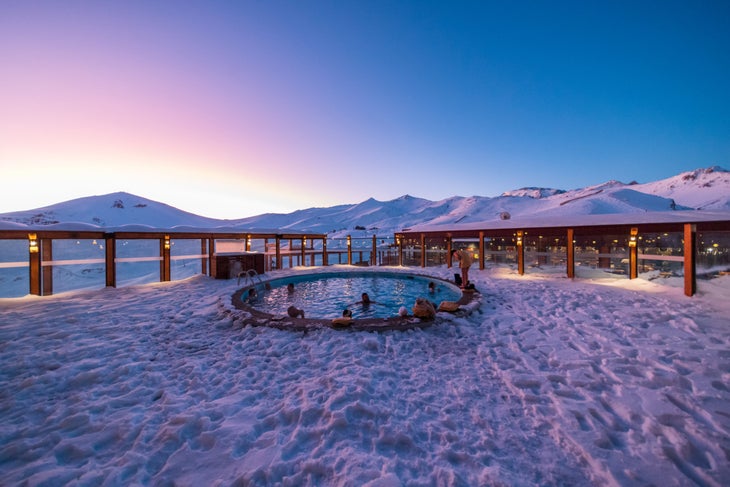
For bowl skiing, the goods sit off the Ancla chair, where you’ll find soft stashes and room to roam. But when the snow is right and your legs are ready, make for Tres Puntas. It’s a local’s favorite for good reason: The lift climbs to over 11,000 feet, unlocking Valle’s highest, steepest, and most exhilarating terrain. Conditions here can be variable, but when it’s good, it’s exceptional.
Most lodging is ski-in/ski-out, which is ideal since you’ll only have a few days on the mountain. Hotel Valle Nevado is the most upscale option, with mountain views and half-board dining. For a more laid-back atmosphere, Puerta del Sol offers apartment-style rooms with access to all the resort’s amenities.
Day 5: Fly to Cusco, Peru
After two or three solid days on snow, it’s time to swap ski boots for trail shoes. Catch the direct 3.5-hour flight to Cusco on LATAM. I’ve been to Cusco a few times, and I always spend the first day exploring the compact, walkable colonial streets by foot and acclimating to the altitude by strolling through the city’s colonial streets and sampling local dishes like lomo saltado, ceviche, and quinoa soup.
Cusco sits at 11,000 feet, and while you think you might be acclimated from your summit runs off Tres Puntas, the altitude can hit hard here, so be sure to stay hydrated, go easy on alcohol, and spend your first night in Cusco before heading deeper into the Sacred Valley.
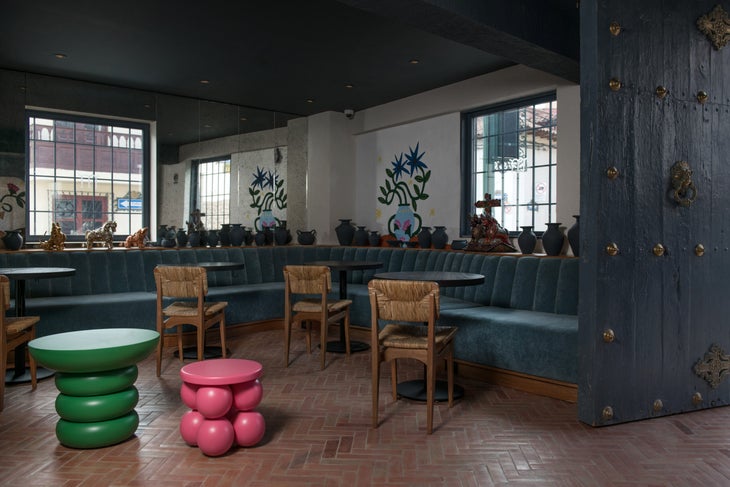
As such, you’ll want to rest and recharge at Motto by Hilton Cusco for the night. Built around a charming central courtyard with sweeping city views, the hotel is stacked when it comes to trendiness, location and affordability with rooms starting as low as $130/night. Meaningful touches like sustainably sourced Amazonian coffee and deep-dive Pisco classes at its on-site restaurant make this a truly immersive introduction to Peru. Plus, the hotel has clever setups for skiers traveling in groups or families, like a bunk bed twin/queen bed combo.
Day 6 + (More Optional Days): The Sacred Valley
If you have an extra day or two of PTO saved up, you should without question add The Sacred Valley to your itinerary. You’ll need to pass through it regardless of your way from Cusco to Ollanyatambo, where the trains leave for the village of Machu Picchu.
I recently did a stint there at the mesmerizing Inkaterra Hacienda Urubamba and was blown away not only by the hotel’s casita-style digs but by their astro tourism programming. The highlight of a recent trip to the Sacred Valley, learning about the deep symbolic and spiritual meaning of the stars to the Inca people added a layer of depth to the trip.
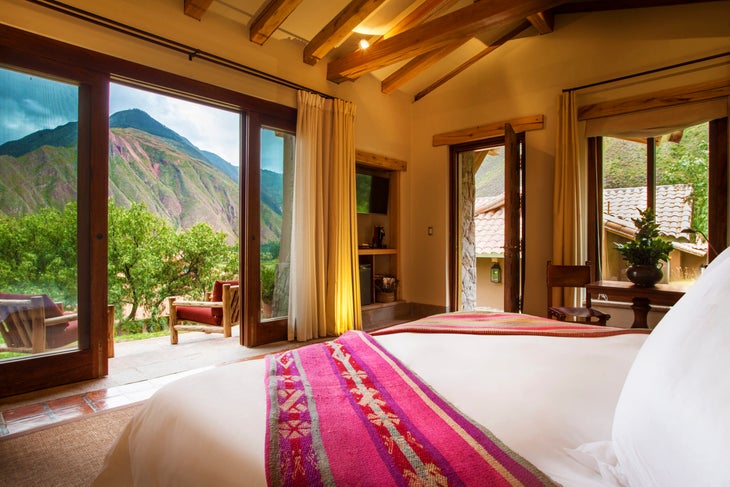
It’ll be helpful to have this education when you reach your next stop, especially because the Incas used the stars at Machu Picchu to align their temples and agricultural calendar, observing constellations like the Southern Cross to mark solstices and seasonal changes, thus allowing them to better plan their harvests.
The Sacred Valley is also home to one of Peru’s richest bounties, so expect top-tier cuisine at every turn, plus mesmerizing mountain views and even a few bonus Incan archeological sites to visit, Pisac and Moray, which are incredibly special in their own right.
Day 7 (+ Optional Days): Machu Picchu
By this point in the trip, with fresh lines in your rear view, your endorphins will be chasing one of the world’s most iconic travel experiences, Machu Picchu. I’ve been lucky enough to visit on three separate occasions, making me well versed on all the ways you can do it.
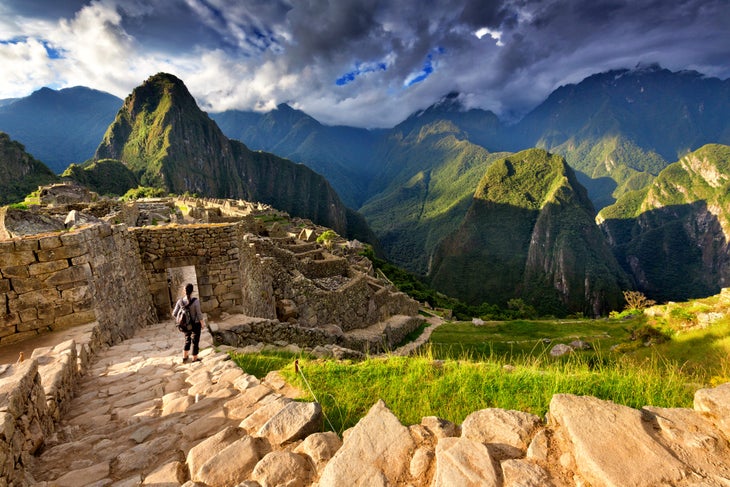
The two main ways to reach Machu Picchu are to hike or catch a bus. If you’ve got more time to spare, you can opt for a short one-night or longer four-night camping-based trek along the Inca Trail that leads you directly to the Citadel. Along the way, you’ll pass terraced farms, glacial rivers, and quiet villages where life still follows the rhythm and traditions dictated by the mountains and the valley’s fertile soil.
On my most recent trip to Machu Picchu, I stayed an extra night in town at the striking Sumaq Hotel. Located at the foot of the historic sanctuary of Machu Picchu, the hotel is situated on the flowing banks of the Urubamba River and offers sweeping views, but a big draw for me was the proximity to the shuttle stop up to the archeological site, which also happens to be the only way up from town (and needs to be pre-booked); you’ll also need your passport handy to get on the bus and for entry into Machu Picchu’s Citadel.
If you’re trying to combine a Machu Picchu visit with a ski trip in Chile, taking the shuttle bus up is undoubtedly the way to do it for efficiency’s sake. So, with my own belly full from Sumaq’s multicourse gastronomy experience dinner the night prior, I simply boarded the first shuttle up that arrived at the entrance about 20 minutes later after a series of hairpin mountain turns.
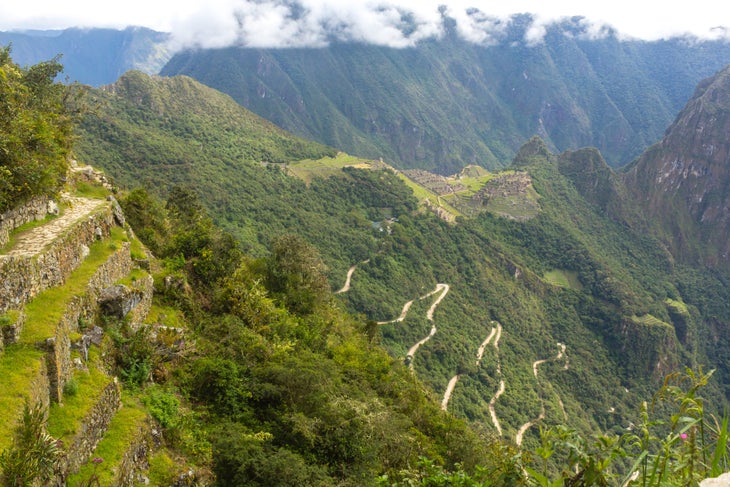
While the shuttle buses run all day, I used the hotel’s proximity and opted for the earliest one. Watching the light spill into the ancient Citadel at 6 a.m. and hearing the birds wake for their morning chirps from the Sun Gate was, no exaggeration, a once-in-a-lifetime experience, and the best tip I can pass on to any Machu Picchu visitor seeking an extra-special moment. But no matter how you see Machu Picchu, there’s no doubt it’ll be incredible—especially when you do it by going from powder days to ancient ruins in the same week.
Travel Tips
Packing
When I’m traveling internationally, especially for a longer trip, I almost always go the rental route for gear. It saves space, hassle, and in the case of Valle Nevado, you’re not sacrificing quality. Their on-mountain rental center is stacked with high-performance skis and demos, and if you’re really aiming to travel light, they even offer rental outerwear and layers.
The beauty of bringing your own gear in this case though is that when you’re packing for a combined ski trip to Chile with a visit to Machu Picchu, your gear can easily pull double duty. That’s right—what you pack for the slopes will serve you just as well at the ancient citadel. Machu Picchu, even during Peru’s dry season, has its own unpredictable microclimate. One minute it’s sunny, the next, a sudden downpour. You’ll absolutely want base layers, a solid mid-layer, and a waterproof shell, something like Norrøna’s Falketind Gore-Tex, which came in handy for me when it poured during my first full day at the site.
Whatever you do, try to mirror what you’d bring for an otherwise warm spring ski day: layers you can easily add or peel off as needed. With that in mind, your suitcase stays streamlined, your comfort stays dialed, and your wardrobe works seamlessly from the Andes to the Inca Trail.
Logistics
The trains (PeruRail and IncaRail, respectively) from Ollantaytambo in the Sacred Valley to Machu Picchu Pueblo (formerly known as Aguas Calientes) are scenic, comfortable, and efficient, but you’ll want to book tickets in advance, especially during this peak season (June to August), and pro tip: If you’re trying to change your journey in or out, you must do so with at least 24 hours advance warning or you’ll risk losing the full fare of your itinerary.
Regardless of how you arrive, there are multiple routes, so make sure to research and reserve your entry ticket to Machu Picchu as early as possible since daily capacity is more limited than ever. Though, if you find yourself in a bind rather than a binding, you can use services like GetYourGuide to score last minute entries—at a premium, of course.
On your last day, return to Cusco and fly out to Lima on one of the regularly scheduled flights which leave almost hourly. Once you’re in Lima’s airport, you can catch a myriad of direct overnight flights back to the U.S., all while dreaming about the endorphin-boosting journey you just took that’s helped you completely rethink summer vacation as you know it.
The post I Skied the Andes and Hiked Machu Picchu in the Same Week—It Was Way Easier Than I Thought appeared first on Outside Online.















